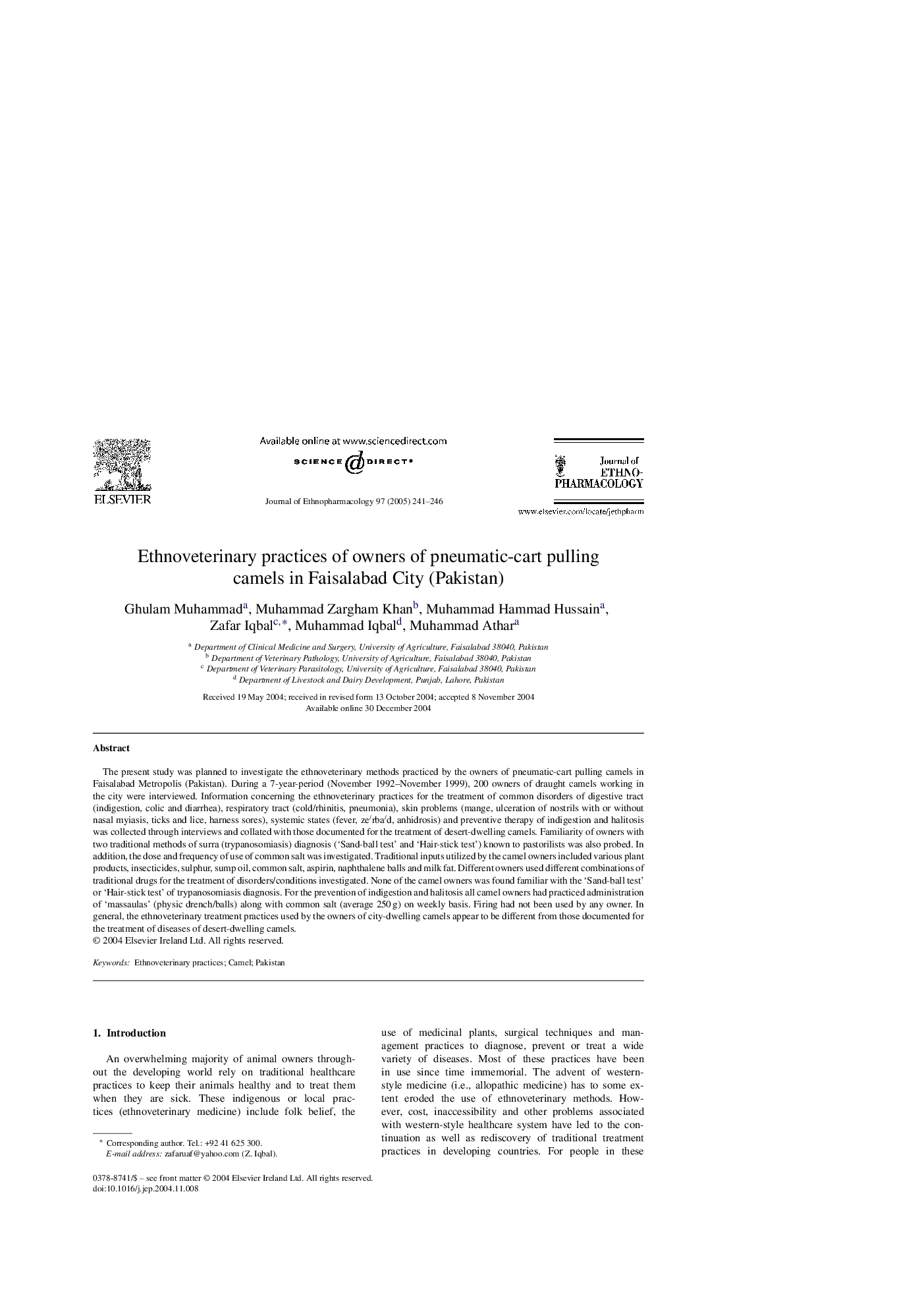| کد مقاله | کد نشریه | سال انتشار | مقاله انگلیسی | نسخه تمام متن |
|---|---|---|---|---|
| 9011422 | 1124156 | 2005 | 6 صفحه PDF | دانلود رایگان |
عنوان انگلیسی مقاله ISI
Ethnoveterinary practices of owners of pneumatic-cart pulling camels in Faisalabad City (Pakistan)
دانلود مقاله + سفارش ترجمه
دانلود مقاله ISI انگلیسی
رایگان برای ایرانیان
کلمات کلیدی
موضوعات مرتبط
علوم پزشکی و سلامت
داروسازی، سم شناسی و علوم دارویی
داروشناسی
پیش نمایش صفحه اول مقاله

چکیده انگلیسی
The present study was planned to investigate the ethnoveterinary methods practiced by the owners of pneumatic-cart pulling camels in Faisalabad Metropolis (Pakistan). During a 7-year-period (November 1992-November 1999), 200 owners of draught camels working in the city were interviewed. Information concerning the ethnoveterinary practices for the treatment of common disorders of digestive tract (indigestion, colic and diarrhea), respiratory tract (cold/rhinitis, pneumonia), skin problems (mange, ulceration of nostrils with or without nasal myiasis, ticks and lice, harness sores), systemic states (fever, ze/rba/d, anhidrosis) and preventive therapy of indigestion and halitosis was collected through interviews and collated with those documented for the treatment of desert-dwelling camels. Familiarity of owners with two traditional methods of surra (trypanosomiasis) diagnosis ('Sand-ball test' and 'Hair-stick test') known to pastorilists was also probed. In addition, the dose and frequency of use of common salt was investigated. Traditional inputs utilized by the camel owners included various plant products, insecticides, sulphur, sump oil, common salt, aspirin, naphthalene balls and milk fat. Different owners used different combinations of traditional drugs for the treatment of disorders/conditions investigated. None of the camel owners was found familiar with the 'Sand-ball test' or 'Hair-stick test' of trypanosomiasis diagnosis. For the prevention of indigestion and halitosis all camel owners had practiced administration of 'massaulas' (physic drench/balls) along with common salt (average 250Â g) on weekly basis. Firing had not been used by any owner. In general, the ethnoveterinary treatment practices used by the owners of city-dwelling camels appear to be different from those documented for the treatment of diseases of desert-dwelling camels.
ناشر
Database: Elsevier - ScienceDirect (ساینس دایرکت)
Journal: Journal of Ethnopharmacology - Volume 97, Issue 2, 28 February 2005, Pages 241-246
Journal: Journal of Ethnopharmacology - Volume 97, Issue 2, 28 February 2005, Pages 241-246
نویسندگان
Ghulam Muhammad, Muhammad Zargham Khan, Muhammad Hammad Hussain, Zafar Iqbal, Muhammad Iqbal, Muhammad Athar,